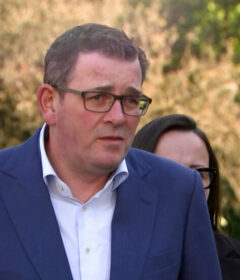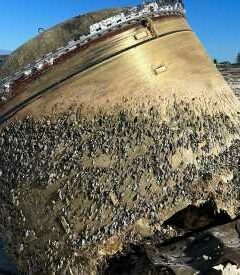Home » Australasia »
After Mass Killing of Trees on a Wealthy Waterfront, a Theory Takes Hold
The crime scene: Nearly an acre of protected bush land in a wealthy suburb of Sydney, bracketed by sprawling multimillion-dollar mansions on one side and the sparkling harbor on the other.
The method: Attacked with a chain saw. Or poisoned. Sometimes, both.
The victims: Banksias, wattles, gum trees, and more. Two hundred and sixty-five in total, dead or dying. Some, approaching 100 years old. All, beloved Australian natives.
The crime: Arboricide, of the highest order.
The motive is unclear. No perpetrators have been identified. But local residents and authorities all have the same theory: Someone wanted an unobstructed view of the water.
In this city, where the shoreline extends inland from the Pacific Ocean for miles in a series of bays, inlets and coves, many a tree has been removed extrajudicially to create a waterfront view and increase the value of a home. But the scale of the culling in Castle Cove, which gained widespread attention last week, was extraordinary. Combined with the assumed affluence and perceived entitlement of the culprit, it has left Australians aghast and outraged.
“It’s all driven by property values, developers, greed,” said James O’Sullivan, 59, as he surveyed the scene of the crime. Such law breaking, he said, was also prevalent in his seaside suburb. “Sydney has had this problem for decades. It’s just out of control.”
For Jennifer White, who had come to see the destruction with her own eyes, the proper consequences of the act were clear.
“They should be put away,” said Ms. White, 79, who lives in a nearby suburb and had come to the reserve with her husband. “I bet they won’t be, though.”
The Willoughby Council, the local government, has offered a reward of 10,000 Australian dollars, about $6,500, for information that leads to a successful prosecution.
But some people feel that “a $10,000 reward is probably not enough motivation for the people who live in this neighborhood, because it’s quite an affluent area,” according to Tanya Taylor, the mayor of the council. Even so, she said, officials were appealing to people’s “sense of moral justice.”
“Somebody must have seen something,” Ms. Taylor said. To reach the reserve, one has to traverse down a steep embarkment, a journey that would have been visible from the street, she said.
Council officials have knocked on local doors and requested CCTV footage. At the scene of the crime, they have strung up large banners that say, “Trees should not die for a view” and “Selfish acts of destructive vandalism have occurred in this area.”
Particular suspicion has fallen on two houses along the street that are currently under development. Outside one of those sites, a construction company’s details were listed.
Michael Ng, the builder, said that he and his workers had become prime suspects but had nothing to do with the matter. Mr. Ng said that he had told the council that he did not stand to benefit from mowing down the trees.
“What’s the point to cutting down the trees? I’m not the owner,” he said. “It’s not worth it.”
At the second house, there was no information visible about who the developer or the builders were.
In the past, Willoughby Council has used banners to sully ill-gotten waterfront views. Other councils have tried wrapping the branches of poisoned trees in massive pieces of cloth or netting, installing big shipping containers and even painting the remains of destroyed trees garish colors.
The penalty for the illegal removal of trees here in the state of New South Wales ranges from on-the-spot fines of a few thousand dollars to, if the matter is taken to court, a fine of up to 1.1 million Australian dollars — but no jail time. Some residents believe that the fines are not a sufficient deterrent to developers or wealthy residents, and some councils have previously called for harsher penalties.
“Successful prosecution is relatively rare and even when there are successful prosecutions, the fines are often so small as to be trivial,” said Gregory Moore, an honorary research associate at the University of Melbourne. “Many people — developers, for example — would consider the fines to be relatively minor costs in terms of doing business.”
Ms. Taylor, the mayor, was hopeful that the perpetrator — or perpetrators — would be brought to justice.
“I think there will be consequences,” she said.
The Castle Cove razing would have needed careful planning, said John Moratelli, a member of the Willoughby Council. “It’s not an hour’s work. This would have taken weeks.”
However, no one raised the alarm. Although the crime is believed to have occurred between June and July, it was only at the end of July that authorities discovered the destruction. It drew national attention last week.
Standing in the reserve — a sprawling 50 hectares, or nearly 125 acres, of bush that is also home to native wildlife like bandicoots and lyrebirds — Mr. Moratelli pointed to where the vandals had drilled holes in the trees and filled them with poison, or chopped them down, each victim marked with a pink ribbon.
“It goes all the way down there,” he said, gesturing to where the reserve sloped down toward the water several hundred yards away. “You see the pink — pink, pink, pink, pink, pink.”
He stepped over a knocked-over sign — erected on a metal pole so long ago that its colors had faded away — warning tree vandals that they would face fines.
Mr. Moratelli, who is also the president of the Willoughby Environmental Protection Association, continued his lament.
“It’s notorious,” he said. “It happens in seaside and coastal areas around Australia, unfortunately, where trees obstructing views suddenly get poisoned and die.”
Yan Zhuang is a reporter in The New York Times’s Australia bureau, based in Melbourne. More about Yan Zhuang
Source: Read Full Article


